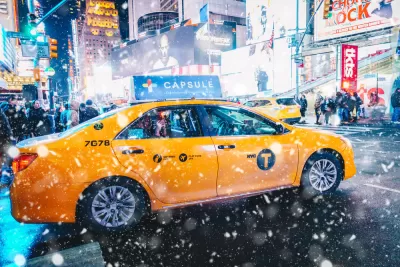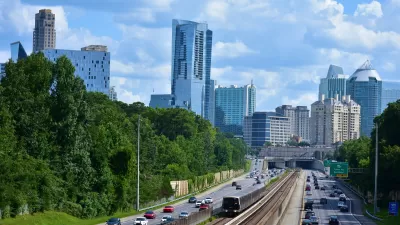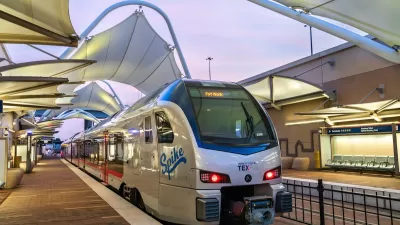CityLab has produced a pair of articles geared toward safe driving behaviors on New Year's Eve.

Mimi Kirk shares news of a bus company in Tokyo that runs a special service in December called the “Oversleeping Rescue Bus.”
For those who ride the Chuo Line in Tokyo, which begins at Tokyo Station downtown and ends about 30 miles west at Takao Station, in the foothills of the Kanto Mountains, the situation is particularly bleak: The rural area lacks inexpensive hotels and all-night restaurants where the stranded can wait out the night.
For these lost souls, the Nishi Tokyo Bus Company, a private outfit, has come to the rescue for the past four Decembers. Its “Oversleeping Rescue Bus” picks up passengers on three early Saturday mornings at Takao Station—at 1:05 am, 10 minutes after the last train rolls in—and transports them back one stop east, to Hachioji station, for less than $8. Last year, the bus served 75 people, with 32 partaking on a single night.
That's great for people who ride the train on the Chuo Line in Tokyo, but for those who plan to party hard in the United States on New Year's Eve, Benjamin Schneider has created a guide to cities and services that prioritize getting home safely. As Schneider notes, Americans don't have a good track record with safe driving behavior after the ball drops on January 1:
January 1 was the most deadly day on the calendar for pedestrians between 1998 and 2014, and the second most deadly for car crashes overall, according to the Insurance Institute for Highway Safety.
Included in Schneider's guide is a list of all the public transit agencies providing free rides ("public transportation is your greatest ally," writes Schneider). There are also free towing services in parts of the country and subsidized ride hailing opportunities—all detailed in the article.
FULL STORY: How to Get Home Safely on the Booziest Night of the Year

Study: Maui’s Plan to Convert Vacation Rentals to Long-Term Housing Could Cause Nearly $1 Billion Economic Loss
The plan would reduce visitor accommodation by 25,% resulting in 1,900 jobs lost.

North Texas Transit Leaders Tout Benefits of TOD for Growing Region
At a summit focused on transit-oriented development, policymakers discussed how North Texas’ expanded light rail system can serve as a tool for economic growth.

Using Old Oil and Gas Wells for Green Energy Storage
Penn State researchers have found that repurposing abandoned oil and gas wells for geothermal-assisted compressed-air energy storage can boost efficiency, reduce environmental risks, and support clean energy and job transitions.

San Mateo Formally Opposes Freeway Project
The city council will send a letter to Caltrans urging the agency to reconsider a plan to expand the 101 through the city of San Mateo.

A Bronx Community Fights to Have its Voice Heard
After organizing and giving input for decades, the community around the Kingsbridge Armory might actually see it redeveloped — and they want to continue to have a say in how it goes.

Houston Mayor Promises Dedicated Austin Street Bike Lane After Public Backlash
Although the one-way bike lane won’t be protected by physical barriers, the proposal is an improvement over the mayor’s initial plan to only include sharrows on the Austin Street project.
Urban Design for Planners 1: Software Tools
This six-course series explores essential urban design concepts using open source software and equips planners with the tools they need to participate fully in the urban design process.
Planning for Universal Design
Learn the tools for implementing Universal Design in planning regulations.
Borough of Carlisle
Caltrans
Heyer Gruel & Associates PA
Institute for Housing and Urban Development Studies (IHS)
City of Grandview
Harvard GSD Executive Education
Toledo-Lucas County Plan Commissions
Salt Lake City
NYU Wagner Graduate School of Public Service





























